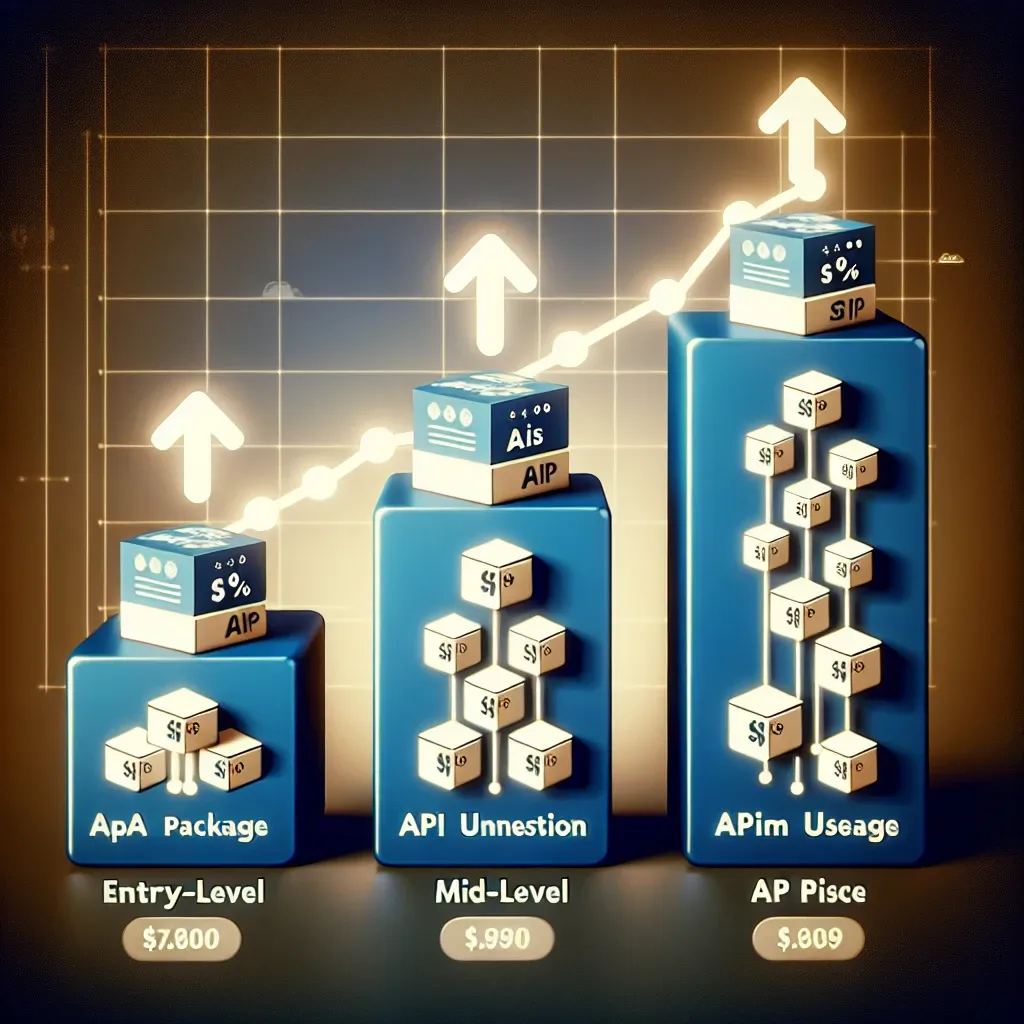In today’s interconnected digital landscape, Application Programming Interfaces (APIs) have become the backbone of modern software ecosystems. For SaaS companies offering API services, creating an effective pricing structure is crucial for sustainable growth and customer satisfaction. The challenge lies in balancing accessibility for smaller users while capturing maximum value from enterprise clients who consume APIs at scale.
Understanding the Foundation of API Pricing
Before diving into specific tier structures, it’s essential to understand that API pricing differs significantly from traditional SaaS pricing models. Unlike subscription-based software where usage patterns are relatively predictable, API consumption can vary dramatically based on customer needs, integration complexity, and business growth patterns.
Key factors that influence API pricing include:
- Volume of API calls or requests
- Data transfer bandwidth requirements
- Response time and performance guarantees
- Access to premium features or endpoints
- Support level requirements
- Geographic availability and compliance needs
The Psychology Behind Effective Tier Structuring
From a conversational perspective, understanding customer psychology is paramount when designing pricing tiers. Research consistently shows that customers prefer having choices, but too many options can lead to decision paralysis. The sweet spot typically lies in offering three to four distinct tiers, each targeting different customer segments and use cases.
The most successful API pricing strategies employ anchoring effects, where the highest-priced tier makes middle-tier options appear more reasonable. This psychological principle, combined with clear value differentiation between tiers, helps guide customers toward the option that best fits their needs while maximizing revenue potential.
The Freemium Foundation Strategy
Nearly every successful API provider starts with a generous free tier that serves multiple purposes. This entry-level offering acts as a powerful customer acquisition tool, allowing developers to experiment and integrate your API without financial commitment. The key is setting limits that provide genuine value for small-scale users while creating natural upgrade pressure for growing businesses.
Effective free tier characteristics include:
- Monthly request limits between 1,000 to 10,000 calls
- Basic documentation and community support
- Standard response times without SLA guarantees
- Access to core functionality but limited advanced features
Designing the Growth Tier: Capturing Scaling Businesses
The second tier should target small to medium-sized businesses experiencing growth. This segment often represents the highest conversion rate from free users and provides predictable monthly recurring revenue. Pricing for this tier typically ranges from $29 to $99 per month, depending on your market positioning and value proposition.
This tier should remove the most significant limitations of the free plan while introducing usage-based pricing components. For example, you might offer 100,000 monthly requests with overage charges of $0.001 per additional request. This hybrid approach provides cost predictability for budgeting while allowing for natural growth accommodation.
Professional Tier: Serving Established Enterprises
The professional tier targets established businesses with substantial API usage requirements and higher expectations for service quality. Pricing typically ranges from $199 to $499 monthly, with significantly higher usage allowances and enhanced service levels.
Key differentiators for this tier include:
- Higher rate limits and faster response times
- Priority customer support with faster response guarantees
- Access to advanced API endpoints and features
- Basic analytics and usage reporting
- Service level agreements with uptime guarantees
Enterprise Solutions: Custom Pricing for Maximum Value
For the highest tier, many successful API providers opt for custom pricing rather than published rates. This approach allows for maximum flexibility in capturing value from large enterprise clients while accommodating unique requirements that don’t fit standard tier structures.
Enterprise pricing negotiations often include volume discounts, dedicated infrastructure, custom integrations, and comprehensive support packages. The key is positioning this tier as a partnership rather than a transaction, emphasizing collaborative success and long-term value creation.
Usage-Based Pricing Components
Beyond basic tier structures, incorporating usage-based elements adds fairness and scalability to your pricing model. The most common approaches include:
Per-request pricing: Charging based on the number of API calls made, typically with volume discounts at higher usage levels. This model aligns costs directly with value received and scales naturally with customer growth.
Bandwidth-based pricing: For APIs that transfer significant amounts of data, charging based on data transfer volume can be more appropriate than simple request counting.
Feature-based pricing: Offering different API endpoints or capabilities at different price points allows for value-based pricing while maintaining accessibility for basic use cases.
Implementation Best Practices and Common Pitfalls
When implementing your pricing structure, transparency is crucial for building trust and reducing customer acquisition friction. Clearly communicate what’s included in each tier, how overage charges work, and what happens when usage limits are approached.
One critical mistake many providers make is underestimating the importance of usage monitoring and billing infrastructure. Customers need real-time visibility into their usage patterns and costs to make informed decisions about tier selection and usage optimization.
Monitoring and Optimization Strategies
Successful API pricing requires continuous monitoring and optimization based on customer behavior and market feedback. Key metrics to track include:
- Conversion rates between tiers
- Customer lifetime value by tier
- Usage patterns and growth trajectories
- Churn rates and reasons for downgrades
- Support ticket volume and resolution times by tier
Regular analysis of these metrics enables data-driven adjustments to pricing structures, ensuring they remain competitive and profitable as your business evolves.
Future-Proofing Your Pricing Strategy
The API economy continues evolving rapidly, with new technologies and usage patterns emerging regularly. Successful pricing strategies must be adaptable to accommodate changes in customer expectations, competitive landscape, and technological capabilities.
Consider building flexibility into your pricing model that allows for easy adjustments without disrupting existing customers. This might include grandfathering existing pricing for loyal customers while implementing new structures for new sign-ups, or providing migration paths that reward customer loyalty during pricing transitions.
Regional and Compliance Considerations
As your API service scales globally, regional pricing variations may become necessary to remain competitive in different markets. Additionally, compliance requirements like GDPR, CCPA, or industry-specific regulations may necessitate different service levels and pricing structures for different customer segments.
Building these considerations into your initial pricing framework saves significant complexity and customer communication challenges later in your growth journey.
Conclusion: Building Sustainable Growth Through Strategic Pricing
Structuring effective SaaS pricing tiers for API usage requires balancing multiple competing priorities: customer acquisition, revenue optimization, operational efficiency, and long-term sustainability. The most successful approaches combine psychological principles with practical business considerations, creating pricing structures that feel fair to customers while driving profitable growth.
Remember that pricing is not a set-and-forget decision. Regular evaluation and optimization based on customer feedback, usage patterns, and competitive dynamics ensure your pricing strategy continues supporting your business objectives as you scale. Start with a simple, transparent structure and evolve based on real-world data and customer needs.
The key to long-term success lies in viewing pricing as a tool for customer success rather than simply revenue extraction. When your pricing structure helps customers achieve their goals cost-effectively while scaling with their growth, you create the foundation for sustainable, mutually beneficial relationships that drive long-term business success.







